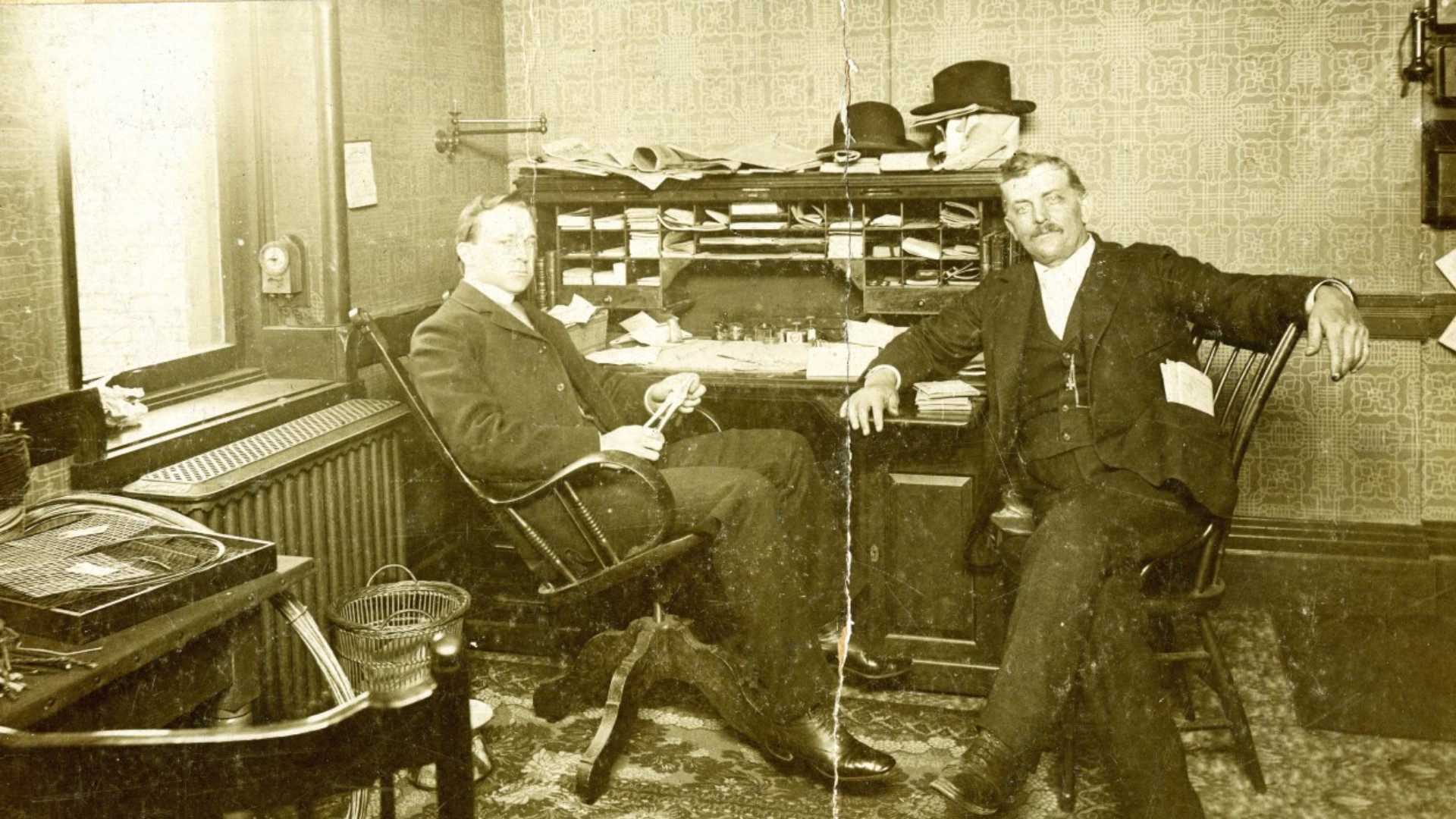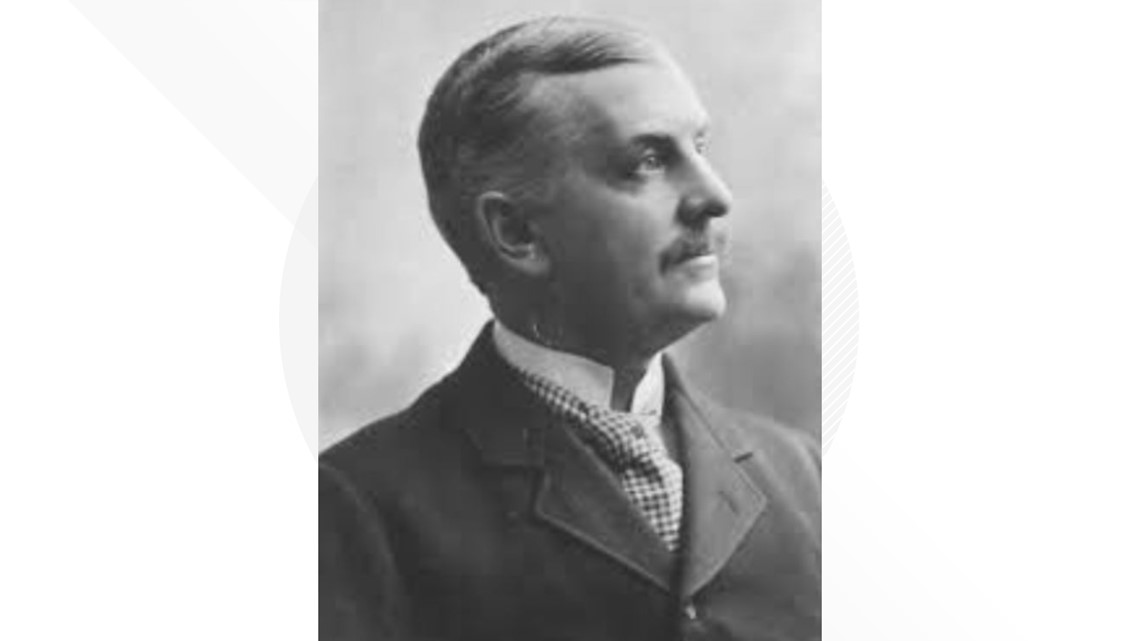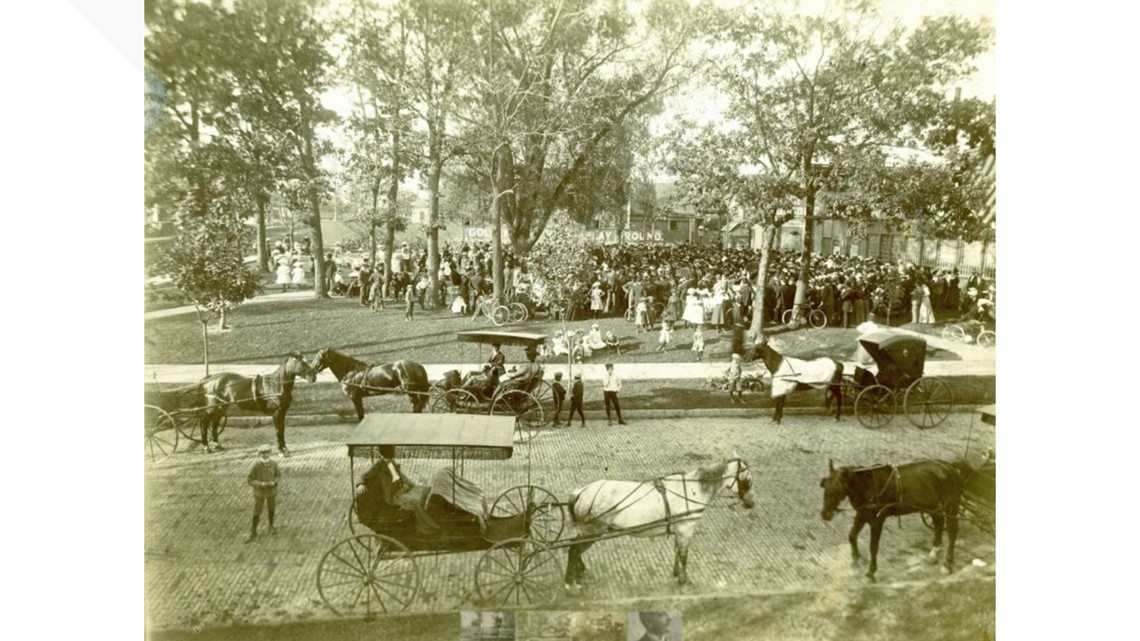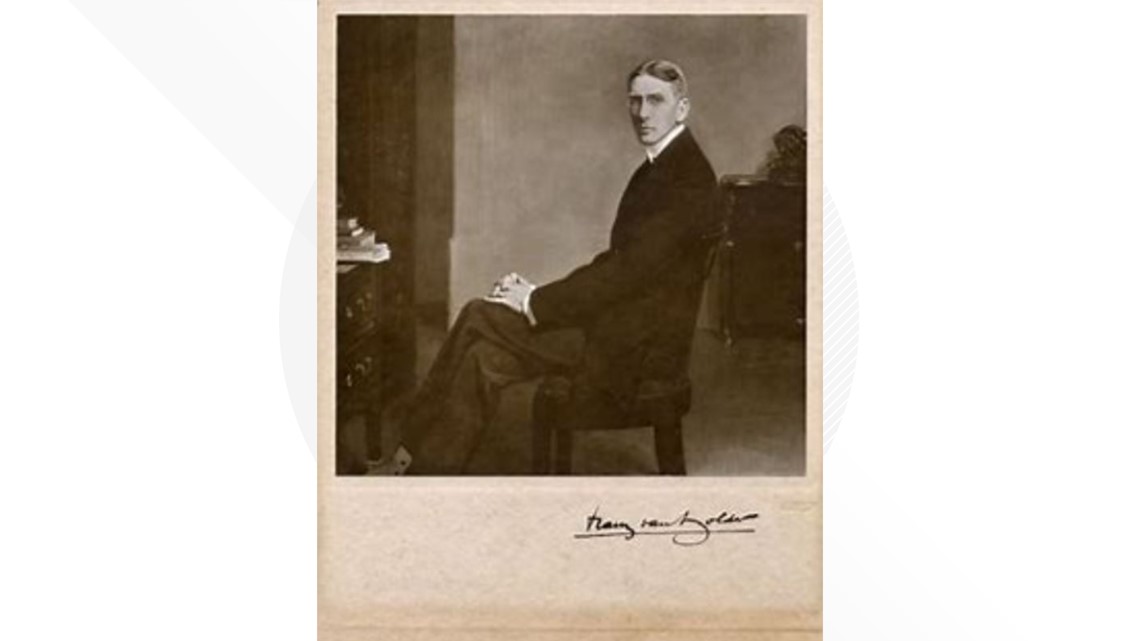The 'Golden Rule' reform of the Toledo police 100 years ago
The city of Toledo is hardly new to the issue of policing reform. In fact, the earliest controversy surfaced more than 100 years ago.
Lou Hebert

As the police reform debate flares white hot in the aftermath of last month's George Floyd arrest and murder in Minneapolis and other high profile cases across the nation, the city of Toledo is hardly new to the issue of policing reform.
In fact, the earliest controversy surfaced more than 100 years ago when Toledo's most popular mayor, Samuel “Golden Rule” Jones waged his own war against police brutality in the city.
How Jones earned his famous nickname 'Do unto others as you would have them do unto you.'
The Welsh-born businessman, a self-made millionaire, ran on a populist-social justice reform theme of being fair to all, regardless of station in life. He was especially embraced by the working class and the poor.
Jones, a fervent disciples of Christian principles, openly theorized that crime and the social ills of the time were not caused by some inherent “evil” or because some people were born to be bad, but believed that the root cause of crime and most social problems was poverty. To Jones, who had been born into poverty himself, being poor was not a reflection of character but of having few options in life. He not only believed in the “Golden Rule” of doing unto others as you would want them to do unto you, but he put the rule into practice in all aspects of his life, personal and public.
Hence he was known as The “Golden Rule” mayor.


His radical ideas reshaped the city How his advocacy led to lasting change
It was during his tenure and advocacy that Toledo developed an impressive park system and other city services and improvements. As an employer of the Acme Sucker Rod Company in south Toledo, making oil drilling equipment, Jones began giving his workers a 40-hour work week and paid vacations. Other employers began to follow suit as workers started to demand it.
He also advocated for city workers to have the same conditions, plus free daycare for mothers and implemented Christmas bonuses for his workers and profit sharing on the belief that they all had a right to share in the annual profits of the company.
He developed unemployment insurance plans for his workers improved a plot of land next to the factory to make a park for workers and their families. It was called “Golden Rule Park.”


The park remains to this day, but without the children’s playground and bandstand or any marker to explain its significance.
His were radical ideas for the time, and as a result, many businessmen and wealthy sectors of the city were opposed to such “socialist” reform. Average workers were not. He was loved by the average citizen who returned him to the mayor's office three time as an Independent when he failed to get the backing of either the Republican or Democratic parties.
When Jones died in July of 1904, while still in office, he was so revered by the Toledo public at large, it was reported that at least 100,000 citizens filed by his casket at Memorial Hall.
Pacifist mindset fuels police reforms To Jones, violence was never an answer
One of the cornerstones of Jones' belief system was that violence was never an answer to solving problems. Because of this pacifist mindset, Jones abhorred guns and gun violence.
He even took away “billy clubs” or truncheons from Toledo policemen, because he thought they were too often used to beat suspects. He ordered the police chief to issue light canes instead and implored his officers to use great restraint in dealing with detainees, even encouraging them to let some of the go free rather than arrest them if they thought it would serve a better purpose. His message to police was to encourage people to do good, and to give people a second chance.
Just what Jones' views on racial relations or justice were are largely unwritten. The city at his time of authority was hardly a model of integration, although there was a growing Black immigration into parts of the city and recognition that police needed to interact with the increasing African American population.
Toledo hires first Black police officer, Albert King, in 1887 But the city would struggle with race relations
The first Black police officer hired by Toledo was Albert King, in 1887. He would serve for 27 years retiring with a pension in 1914. Others followed, such as Ed Harris and Esther Ferguson. Their patrols and interactions with the public were restricted to the African American neighborhoods as they often got more cooperation in solving crimes than did the White officers.
The presence of Black officers on the Toledo Police Department did not mean that racial hostilities or injustices against African Americans were non-existent in the city.
Newspaper articles in the early part of the 20th century always referred to Black victims or suspects as “colored” as did police reports. Police shootings of “Black” suspects for minor or non-violent crimes were not uncommon. In some cases the unarmed suspects were “running away” when felled by bullets. Judging from the lack of follow-up press reaction, the winds of controversy never seemed to rise.
'Light on petty crime' Toledo sees dramatic decrease in crime during Jones' tenure
During the tenure of Mayor Samuel M. Jones, from 1897 to 1904, the city was relatively peaceful. Arrests went down by some 25% during his years in office. In 1903, there was only one reported murder in the city which was nearing the 200,000 population mark.
His theories of going “light on petty crime” were best illustrated on those occasions when Jones sat in as a fill-in magistrate in Toledo's Police Court (similar to today's Municipal Court). There, he would get to handle the daily docket of minor crimes.
Historians and newspaper men of the day wrote that Jones frequently dismissed cases against those who were brought before him because he thought for many of the defendants, their only real crime in life was being poor and they should not be sent to jail for their actions. Jones openly doubted that jail would make them better citizens, one time saying that if he thought jail would improve people's lives, he would send his children there.
He resisted the common practice of just sending the misfits and miscreants to the workhouse for a 30-day sentence. As a result, prostitutes, vagrants, petty thieves and beggars usually found themselves going free if Jones was seated on the bench.
"Only the poor are arrested for being drunk in public," said Jones on dismissing the case of a man brought before him for public drunkenness.
He said to the arresting officer, “You would not arrest a rich man for drunkenness, you would send him home in a hack(cab).”
In yet another case, a man was brought before Jones because he was found on the street with a loaded revolver. Writer Ernest Crosby detailed the event in a 1906 Samuel Jones biography.
“The mayor held the pistol up so that everyone could see it and declared that it was a devilish weapon, intended solely to kill human beings. It was worse than useless; it was hellish, and worse than whiskey a thousand times. The prisoner was sentenced to smash the revolver to pieces with a sledge hammer, and the court adjourned to another room to see the sentence carried out. As they left the court room, the mayor laid his arm affectionately over the shoulder of the prisoner, who grasped his hand with a sudden pressure that indicated how little he had expected the unusual sentence."
A policeman put the pistol in a vise, the prisoner was given a sledge hammer, and in an instant, he had smashed the weapon to fragments and was a free man again.
Mayor Jones' reform-minded perspective of guns and crime was not lost on one of the regular and long-time police magistrates in Toledo, Judge James Austin. Austin once declared that guns were the worst scourge to be unleashed on society and should be banned.
The police chief at the time, Perry Knapp echoed the same anti-gun belief that most crimes did not require intervention by force and he also forbade his officers to engage in practice drills for shooting, fearing that the more the officers practiced marksmanship the more likely they were to use their guns indiscriminately on the public. His 12 years as chief did not win him much support among the rank and file.
The move towards leniency by the mayor and the municipal court's judges created a deep divide between them and the Toledo workhouse where prisoners were reported to have been repeatedly abused by the jail staff, beaten and deprived of food for discipline. In one case.
In July of 1901, Judge Wachenheimer openly sided with a former workhouse inmate who had been brought before the court again for stealing. The judge said the man, who claimed to have been beaten and fed a diet of bread and water, looked so sad and in such poor shape that he dismissed the charges against him and let him go free. He told reporters later he “didn't have the heart” to send him back to jail.
The police courts, however, during the Jones years were not lenient to everyone. Domestic violence was rarely tolerated and husbands and fathers who abused family members or who were found guilty of neglect were usually found themselves being transported to jail in the workhouse. Sporting horse and brothel keepers who housed underage girls were also dealt with severely and swiftly.
Despite peace, problems still existed The Tenderloin District had a dark history that went without disruption
As “peaceful” as the city may have been during the years of the Jones' social reform era, it was not without crime. There were problems, especially in the so-called Tenderloin or “Badlands” of the city. This was a distinct and separate area of Toledo near the present day Fifth Third Field, where social and moral crimes flourished. Prostitution, gambling, drinking, opium, swindlers, dancing and general rowdiness dominated the street life. Sometimes violence, even murder was a feature of the daily drama that was the “District” which had evolved into existence sometime in the 1880s and lived for some 40 years.
Ironically, as a man of deep religious conviction, Jones was not eager to disrupt the lives of those whose life's pathways led them to the Tenderloin.
Jones subscribed to the theory that most of the crimes committed here were born of poverty and desperation, and while it needed some regulation oversight for the public safety, it need not be shut down. It even had its own police unit in charge of keeping the peace.
One of the main complaints was that some of the police were taking bribes and payouts to ignore crimes and look the other way. Jones would not tolerate that and took action against some officers who were caught.
A turn toward being tougher on crime Modernism ushers in change
So how did this early “experiment” of reform by peace officers of Toledo play out? It may be difficult to achieve consensus.
After Jones passed away in 1904, there were attempts by his immediate successor to get tougher on crime, but it didn't last long.
Mayor Robert Finch was followed quickly by a strong supporter of Mayor Jones, in the person of author and lawyer, Brand Whitlock, also a progressive reform minded public figure. Whitlock continued the legacy left by Jones and kept many of the Jones era policies in place. Changes to those practices did not occur until the U.S. involvement in World War I and Whitlock left office.


At that point, a new era of modernism was taking root, in Toledo, and across the U.S. The rise of an industrial economy, the new popularity of automobile, and a host of other new emerging technologies, such as radio, were transforming everyday life, and changing attitudes and opinions.
They were also changing the face of crime and ways of fighting it. Fingerprints, mugshots, better equipment, motorcycles and automatic weapons created new possibilities.
Many in Toledo's police community who felt they had been handcuffed by Jones' and Whitlock years of lenient policing reforms, seemed eager to embrace more aggressive policing methods - in time, they did.
In the March 1919 National Police Journal, it is written that Chief Knapp's easy-on-the-crooks method of policing in Toledo did make life a bit safer for a number of years. But the policy the Journal said was a “handshake with the devil”.
Essentially by the “hands off” attitude of policing, the city had been protecting the criminals, thus becoming a haven for many offenders from other cities who came to Toledo to lay low, cool off or hide. They knew better than foul their own hiding place and thus, serious crime was relatively low. Toledo protected the crooks. They protected Toledo.
After the public became more aware that Toledo was harboring criminals, the public wanted reform and the police department, was forced to begin making arrests and started cleaning up the city.
The Police Journal account says when the police began cracking down, “crooks began howling for revenge. In a few months the city was being bitten by the Golden Rule snake it had raised for a watch dog”.
By 1918, a whirlpool of crime would ensue, throughout the nation. Samuel Jones' idealistic notion of a “Golden Rule” era of kind and gentle policing was over.
It is history, and cannot be rewritten, but can be re-examined and used as a tool as we embrace the future - a future that now engenders debate over police reform and how to best meet the needs of a society that is changing once again.
Mayor Jones of Toledo is considered by some scholars and students of government to be one of the greatest reform mayors in the history of the United States. His ideas were ahead of his era, maybe ahead of this era, as more than a century ago as he dared to challenge the culture of the status quo and offered these thoughts on what that future of policing in America should be.
“I am aware of the fact that many people believe in the virtue of brute force, but I do not. For my part, I would be glad to see every revolver and every club in the world go over Niagara Falls, or better still, over the brink of hell," Jones said.
MORE ON WTOL
RELATED: Small-town Genoa deals with big-time COVID outbreak; mayor questions health department transparency
RELATED: This Day in NW Ohio
